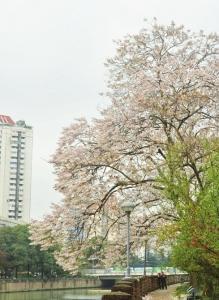193 按源的显著性分类
Classification by significance of the source
(https://www.nuclear-power.com/)
按源的显著性分类
Large (Significant) neutron sources
大型(显著)中子源
Nuclear Reactors. There are nuclei that can undergo fission on their own spontaneously, but only certain nuclei, like uranium-235, uranium-233, and plutonium-239, can sustain a fission chain reaction. This is because these nuclei release neutrons when they break apart, which can induce the fission of other nuclei. Uranium-235, which exists as 0.7% of naturally occurring uranium, undergoes nuclear fission with thermal neutrons with the production of, on average, 2.4 fast neutrons and the release of ~ 180 MeV of energy per fission. Free neutrons released by each fission play a very important role as a trigger of the reaction, but they can also be used for another purpose. For example, one neutron is required to trigger further fission. Part of free neutrons (let say 0.5 neutrons/fission) is absorbed in other material, but an excess of neutrons (0.9 neutrons/fission) can leave the surface of the reactor core and can be used as a neutron source.
核反应堆。有些核可以自发地发生裂变,但只有某些核,如铀235、铀233和钚239,可以维持裂变链式反应。这是因为这些核在分裂时会释放中子,从而导致其他核的裂变。铀-235占天然铀的0.7%,它与热中子发生核裂变,每次裂变平均产生2.4个快中子,并释放约180 MeV的能量。每次裂变释放的自由中子在触发反应方面起着非常重要的作用,但它们也可以用于其他用途。例如,需要一个中子来触发进一步的裂变。部分自由中子(假设0.5中子/裂变)被其他材料吸收,但多余的中子(0.9中子/裂变)可能会离开堆芯表面,并可用作中子源。
注:
(以下内容来自百度百科)
③反应堆中子源
利用原子核裂变反应堆产生大量中子。反应堆是最强的热中子源。在反应堆的壁上开孔,即可把中子引出。所得的中子能量是连续分布的。很接近麦克斯韦分布。特点是中子注量率大,能量谱形比较复杂。

(待续)
,




